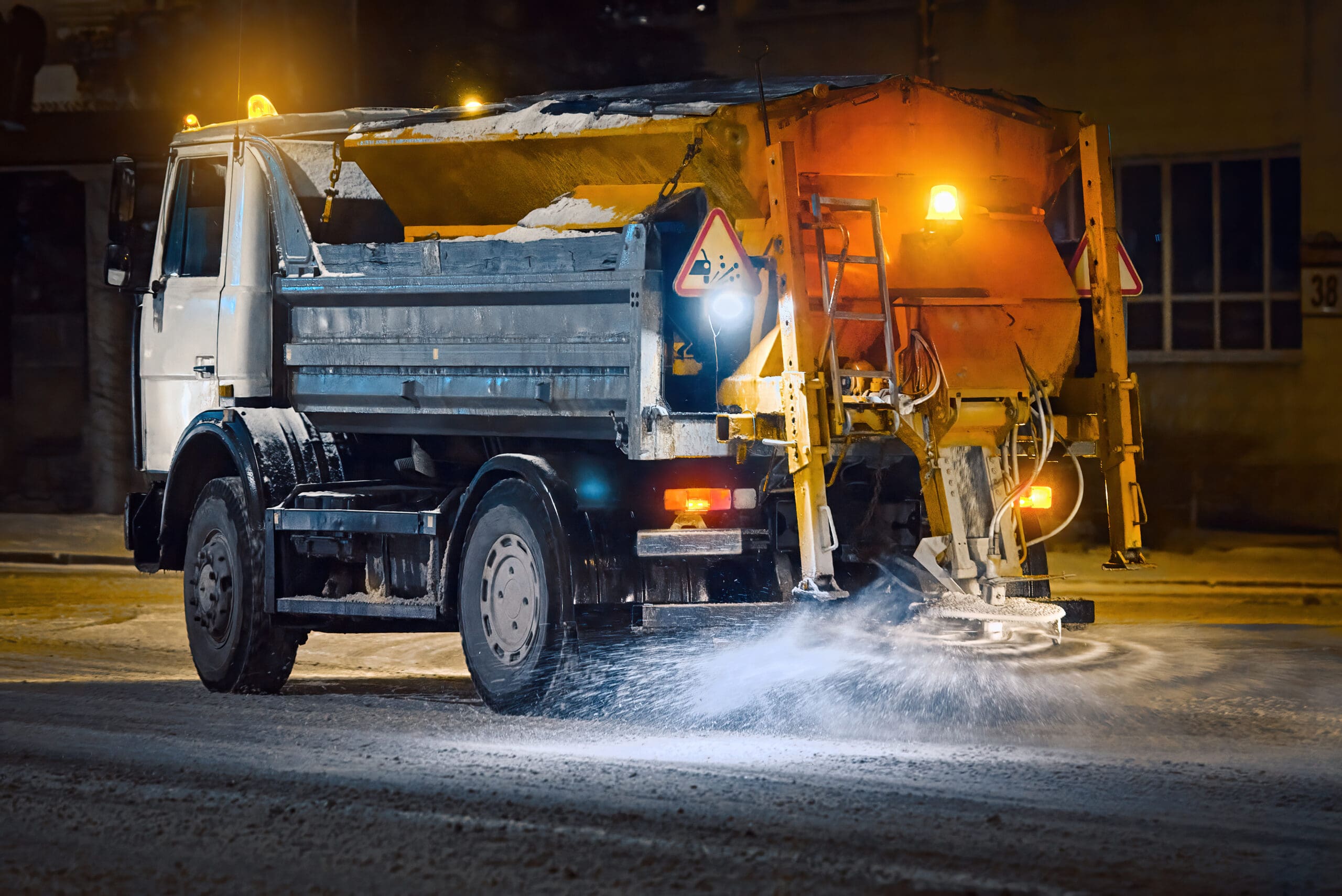
To be sustainable, a balance must be struck economically and environmentally. Salt in snow and ice operations is often overused in an attempt to appease customers, but taking the time to properly calibrate and use the right type of salt for the job can result in savings and less salt waste.
“What it boils down to is that solid salt that we use, if we see that on the pavement, particularly after we’re done doing our work and after the storm, and you see it the next day, that’s pure waste,” says Phill Sexton, CEO and founder of WIT Advisers. “Because that solid salt has to convert to a brine for it to be effective, to actually do its job, which is lower the freezing point of water below 32 degrees on the surface. Do we understand that every granule of salt that we see, although people perceive it as traction, it’s really not. It’s almost just as dangerous as the ice itself if there’s too much on there.”
Sustainable Salt Rates
Sexton says there is a huge diversity of recommended salt application rates, but he suggests using the Snow and Ice Management Association’s (SIMA) production rates as a starting point.
“Whatever the bag tells you, the reason the bag tells you a certain amount is because it’s super confident that it’s going to perform, but it’s also wasteful,” Sexton says. “Whatever the bag says, you probably need half of that.”

Sexton stresses that it’s never one rate. Variables like the type of precipitation and the temperature will impact the proper application rate for salt. Landscape contractors should standardize their spreader application rates across equipment types and calibrate application rates for the minimum required salt output based on these weather variables.
Jonathan Crandall, chief visionary with JC Grounds Management, based in Danvers, Massachusetts, says they generally use salt between the range of a quarter ton per acre and half-ton per acre. They measure their sites using satellite software to determine the exact amount of salt that should be used for each property.
Much like how you measure a property to calculate the correct rate of fertilizer to be applied, Sexton encourages doing the same with salting a parking lot.
Crandall says one of the challenges with salt application rates is achieving consistency with every single truck and spreader.
Take into account flow settings, conveyor/auger and spinner speeds, ground speed and material size and density when establishing a calibration process.
Sexton says that calibrating is not just setting the gate opening but calibrating spreaders to have material come out at a specific rate per acre. He says this requires setting a ground speed policy with your drivers.
The equipment should be calibrated in the preseason, mid-season and anytime changes are made to the equipment or material.
Beyond Sodium Chloride
The usage of other salts is important as sodium chloride is not effective below 15 degrees Fahrenheit. Magnesium chloride can work down to five degrees and calcium chloride can work down to -25 degrees.
Sexton notes that there is an awareness issue as magnesium chloride or calcium chloride are often promoted as environmentally friendly, causing people to think they can use more copious amounts of it with no repercussions.

However, magnesium chloride and calcium chloride are not more environmentally friendly than sodium chloride.
“If anything, they could be worse because although the sodium in salt is a drinking water quality issue,” Sexton says. “The chloride anion is the more serious issue being that a sodium or magnesium or calcium ion attached to chloride anion. Keep in mind sodium chloride is NaCl. Magnesium chloride is MgCl2 , calcium chloride is CaCl2, so you have double the chloride ions, and that’s what’s polluting the waterways.”
Sexton says chloride anions never biodegrade and generally cannot dilute out. Even alternative materials like beet juices contain sugars and carbohydrates that cause unintended consequences as nonpoint source pollution runoff provides nutrients that feed hazardous algae blooms.
Crandall says there’s a massive conflict between safety and sustainability when it comes to salt applications. He says contractors and customers need to find a balance between what makes sense and what doesn’t harm the environment while still maintaining safe surfaces.

